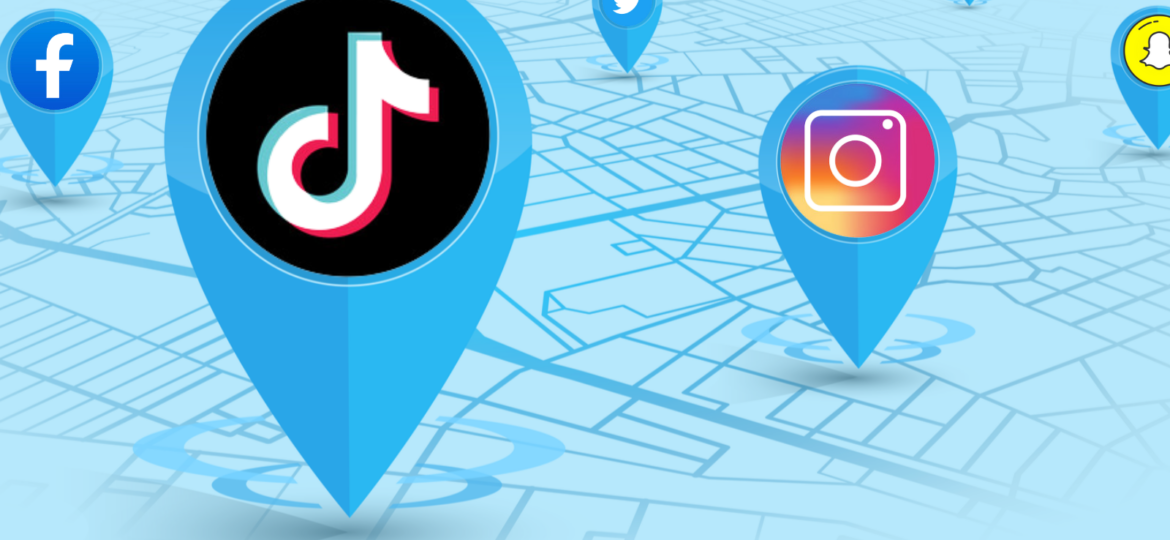
Last Updated on September 6, 2022 by anytimedigital
Social media has changed the way we consume information and interact with our friends. Recently, new social search features have been introduced giving users a personalized experience when looking for something on these networks. Generation Z are relying heavily upon TikTok or Instagram as their preferred method of research before buying anything online. Therefore, it is important for local businesses to take note on this up and coming search method. Our blog discusses how social search is complimenting the local SEO landscape.
What is Social Search?
Social search is a type of search engine that relies on social media to generate results. Traditional search engines like Google and Bing rely on algorithms to determine the most relevant search results. However, social search engines use social media data to provide users with results based on their social networks. This allows users to find local businesses, people and content within their social channels. Social search is becoming extremely popular with the Generation Z demographic. This group is more likely to trust recommendations from their social networks than from strangers. In addition, social media channels have moved in favor of short-form video content. Therefore, engaging younger people that consume information through quick segments of visual content.
Social search also has the advantage of being more personal than traditional search engines. The reason is it takes into account the user’s social connections when ranking results. This can be particularly useful when searching for recommendations. For example, if you live in Chicago and search for “pizza,” you might see results for pizza places in your area recommended by friends or family. In addition, by utilizing video marketing, you can showcase menu items and have customers or an influencer describe the taste.
How Social Networks are Implementing Social Search
Social networks are constantly evolving to meet the needs of their users. Therefore, it’s only natural that these networks are rolling out social search features to their platforms. Here is what they’ve done so far and what’s upcoming.
Facebook Social Search
Facebook has always been a strong advocate of local businesses. The social media platform provides a way for businesses to connect with their customers. And, create a community around their brand. They allow businesses to post updates, photos, and events. In addition, Facebook has always allowed businesses to answer questions and interact with customers.
Recently, Facebook which is now known as “Meta”, reached out to small business owners last year to learn more about the challenges they were facing. The input received led the social network to create Meta Boost Small Business Studio. This tool provides small businesses with resources, trainings and events created to help them succeed on their social networks which includes Instagram. Earlier this year, Facebook also developed Facebook Reels. These are short videos you can create for your business to get traction with a wider range of audiences that use Facebook. With Facebook Reels being rolled out, you can start reaching people locally.
Twitter Advanced Search and location spotlight
Twitter Advanced Search is a powerful tool that can be used to find users and local businesses near you. To use Twitter Advanced Search, simply enter your location and keyword into the search bar. Twitter will then return a list of results that includes both users and local businesses. This makes it easy to find potential customers and connect with them on the social app.
This feature is an especially valuable tool for local businesses. As a result, it makes it easy to connect with potential customers who are already interested in what they have to offer. For example, if a local restaurant Twitter Advanced Searches for “food near me,” they will be able to connect with potential customers who are looking for a place to eat.
Twitter’s latest update to their platform is an intriguing one. Location Spotlight for professional accounts allows local businesses to include detailed information about themselves, such as the location and hours of operations or contact details on profile pages. In addition, they can list their phone number and email address. The information displayed is similar to when someone searches your business through a map app like Google Maps.
Snapchat My Places
Snapchat’s “My Places” feature allows users to search for nearby users or local businesses and see listing information such as the business name, address, and Snapchat score. To use “My Places”, you simply open Snapchat and swipe to the right to access the Snapchat map. Then, zoom in on the location you’re interested in, and see what Snapchat stories have been tagged to that specific spot. If you’re looking for a particular business, you can also search for it by name or category. For example, if you’re looking for a restaurant in your area, you can search for “restaurants” and Snapchat will show you a list of nearby options.
Instagram Map Search
Instagram has rolled out a new map search feature that makes it easier for users to discover local businesses. The feature allows users to view a map of their current location and zoom in on specific areas. In addition, you can see a list of businesses that have been tagged in that location. This is a useful tool for finding new local businesses especially if they’re not easily accessible by traditional search methods.
The Instagram profile pages for these businesses are designed to look more authentic and interesting than ever before. For example, the information you will find about each business includes the category for the establishment (e.g., bar) and number of Instagram posts. In addition, information about prices and operating hours.
Instagram is also relying on user-generated content to add authenticity. This is seen through the use of top 3 photos from tagged locations rather than logos and profile pictures used by businesses themselves. Another feature to mention is once you click into each business location on the map, a related guide will appear. However if users create guides with your establishment in mind, your business becomes even more discoverable. Locations may also include contact information such as your business’s phone number. As a result, increasing clicks to call directly from the Instagram app.
Instagram has just made it a little easier for businesses to be discovered by giving them more power over their profiles. If you have an account and are looking forward to improving your marketing, now is the time! You can boost brand awareness through user-generated content or influencer campaigns that will help people share what they’re doing at any moment with your business in mind.
TikTok Location Tagging
TikTok is a popular video app that has grown significantly over the past couple of years. It’s quickly become one-stop shop for short form content and there are even changes being made by Instagram to compete with it. Recently, brands have started realizing how powerful this algorithm can be when engaging an audience. For example, leveraging sales through influencer partnerships.
As a local business, you don’t have to shell out substantial marketing budgets on TikTok. The popular app has recently added “location tagging”. This feature gives businesses the opportunity to tag their TikTok videos with their location. Local businesses can benefit from TikTok location tagging in several ways. First, it makes it easier for potential customers to find your business. Second, it allows you to target TikTok users in your local area. And third, it gives you an opportunity to connect with other local businesses on TikTok.
Location tagging on TikTok is the new way that generation Z users are searching for businesses. Therefore, if you want to reach this powerful demographic, TikTok is the place to be. According to TechCrunch, a research study conducted by Google recently showed that almost 40% of young people (ages 18-24) go to TikTok or Instagram, when they’re looking for a place for lunch. They’re not using Google Maps or search. Furthermore, a business that serves a certain area, such as cafes, restaurants, bars, gyms, salons, retail and others will attract more followers through TikTok.
The Shift
Younger generations are changing the way they navigate through their everyday lives. The future lies in younger users turning to social video apps for information about restaurants, rather than using search engines. Therefore, This trend could cut into core business practices such as discovery and mapping over time. In addition, all those ads sold against queries that start off on Google before moving onto other sites like Yelp! Eventually, younger audiences may launch their own maps app. However, they don’t navigate through it first-hand like an older demographic does by looking up directions or places nearby. The shift towards using social networks for search also means these younger individuals’ habits may affect older demographics. Especially since many people rely heavily upon intelligent searches via SERPS (search engine result pages).
Conclusion

